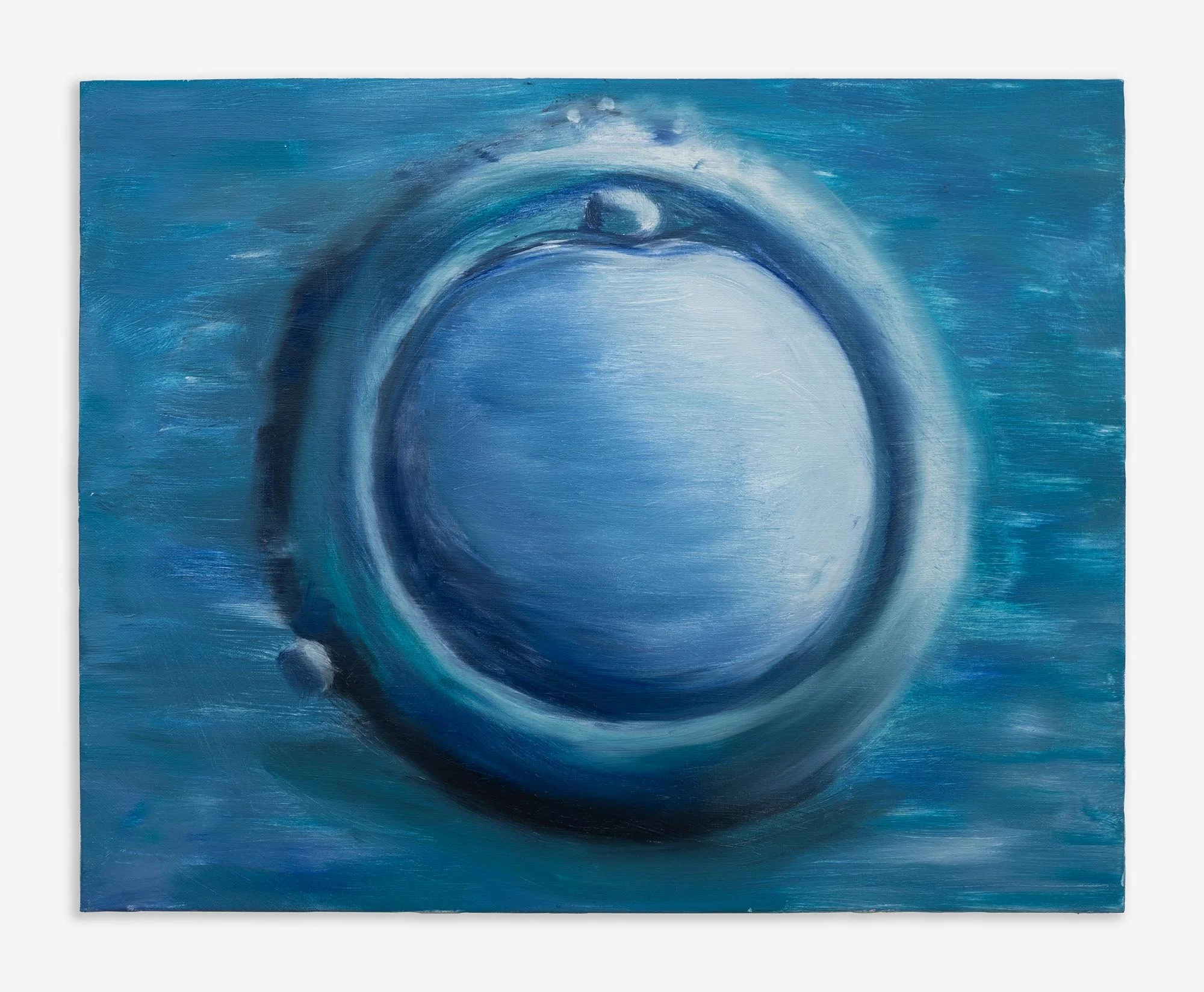Zygote, 2021
Zygote, 2021
Oil on linen
40.6 x 50.8 cm (16 x 20 in)
Signal, May 5 – June 10, 2022, Peres Projects, Milan
Zygote (2021) delves into the origins of life and the concept of potentiality embedded in beginnings. Through a delicate interplay of subtle gradations and fine textures, Tan Mu conveys the intricate details and inherent vitality of the zygote as observed under the microscope.
As the first cell formed through fertilization, Zygote resonates with themes of growth, transformation, and the nascent possibilities that define existence. The artwork not only explores biological beginnings but also metaphorically reflects on the genesis of ideas and the birth of creativity. It invites viewers to contemplate the profound simplicity and complexity of life’s origins, fostering a deeper appreciation for the fundamental processes that underlie all forms of life.
Signal, May 5 – June 10, 2022, Peres Projects, Milan
Signal, May 5 – June 10, 2022, Peres Projects, Milan
Q: What inspired you to create Zygote?
Tan Mu: The inspiration for Zygote came from my deep fascination with the process of conception. This series began with my interest in IVF (in vitro fertilization) technology. After speaking with scientists in a lab, I gained access to visual materials on the developmental process of embryos. Observing the forms and stages of fertilized eggs through a microscope, I was captivated by the visual evolution of life at its very beginnings. Zygote is the first work in this exploration of the origins of life. Although each piece in this series was created in different years and has its own title, they are all part of an ongoing body of work that reflects my continued inquiry into the initial forms of life.
Q: How does the zygote resonate with themes of growth and transformation? How does it metaphorically reflect the origin of ideas and the birth of creativity?
Tan Mu: The zygote represents the starting point of life, symbolizing infinite potential and the unknown. For me, it embodies a process of “fission,” a transformation from simplicity to complexity. This fission is not only biological but also serves as a metaphor for creativity—how an idea starts small and unfolds into endless possibilities. The process of gene replication and evolution carries a mathematical logic that fascinates me, reminiscent of how thoughts evolve from an initial spark into intricate systems. While creating Zygote, I wasn’t just depicting the physical structure of a cell; I was reflecting on how humans are designed at a microscopic level, and how these systems and information are passed down through the “program” of genes.
Q: Painting is also a process. Could you share your experience in creating this piece?
Tan Mu: The creation of Zygote was a quick and intuitive process. I used large blocks of color and fluid brushstrokes to capture the microscopic structure and texture of the fertilized egg. The experience felt special, as if I were painting a celestial body—something both immense and minuscule, familiar yet mysterious.
Because the zygote’s form is not visible to the naked eye, the creative process relied heavily on both the microscope image and my imagination. This approach differed from traditional observational painting, as there wasn’t a physical subject in front of me to directly study. Instead, I engaged in a dialogue with the essence of the cell. I also realized that my body once began as such an embryo; the zygote isn’t just a scientific image—it is also part of me. This awareness brought a profound sense of mystery and connection to the work.
While creating this piece, I became deeply fascinated with the structure of cellular fission. The mathematical logic of duplication reminded me of how humans function as intricate systems—from the first fold to the second, until a complete human with countless subdivisions emerges. This intersection of biology and mathematics made me reflect on how genes carry and replicate information and how this “natural programming” originates. The work not only allowed me to explore the beginnings of life but also inspired philosophical contemplation on genes and human behavior.




